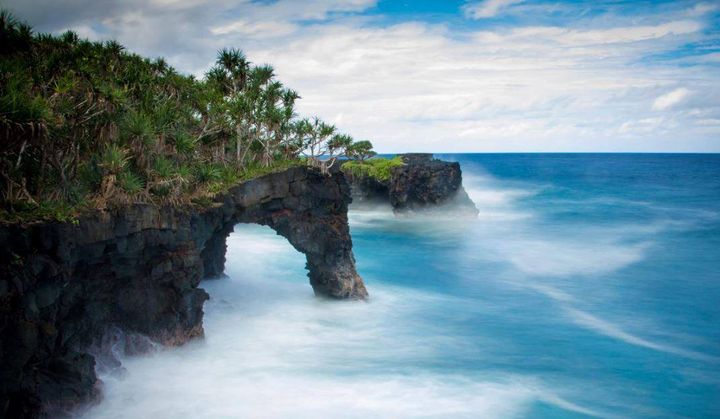
View of the National Park
The Ramsar Secretariat today announced that Samoa has declared O Le Pupū Puē National Park, established in 1978 as the first National Park in the South Pacific region, as a Wetland of International Importance.
This makes it the second Ramsar site for Samoa, with the first being Lake Lanoto’o.
The Site (Ramsar Site no. 2313) extends from the highest points of Upolu Island down to the rugged Le Pupū lava cliffs on the island’s south coast. It is home to two montane herbaceous marshes as well as parts of Mataloa River and Vaalega River, all good representatives of such ecosystems in Samoa. The Park includes large tracts of forest dominated by native plants, and is considered as the island’s best-preserved remaining tropical forest. It includes parts of the Togitogiga water catchment, the main water source for four villages, and also boasts waterfalls that are a prime tourist attraction.
The Site is an Important Bird and Biodiversity Area as well as one of the eight terrestrial Key Biodiversity Areas of Samoa. Its diverse habitats support four of the eight globally threatened bird species of Samoa including the critically endangered tooth-billed pigeon (Didunculus strigirostris) and the endangered mao (Gymnomyza samoensis), whose populations have severely declined in recent years. Very little is known about the freshwater biodiversity of Samoa; it is likely that the freshwater ecosystems in the Park support significant biodiversity. Several management actions are being undertaken to address the vigorous spread of invasive plants after the cyclones of 1990 and 1991 caused extensive damage to the lowland forests.
The Ramsar Convention’s mission is “the conservation and wise use of all wetlands through local and national actions and international cooperation, as a contribution towards achieving sustainable development throughout the world”. According to Ramsar, wetlands are among the most diverse and productive ecosystems. They provide essential services and supply all our fresh water. However they continue to be degraded and converted to other uses.
The Convention uses a broad definition of wetlands. It includes all lakes and rivers, underground aquifers, swamps and marshes, wet grasslands, peatlands, oases, estuaries, deltas and tidal flats, mangroves and other coastal areas, coral reefs, and all human-made sites such as fish ponds, rice paddies, reservoirs and salt pans.
